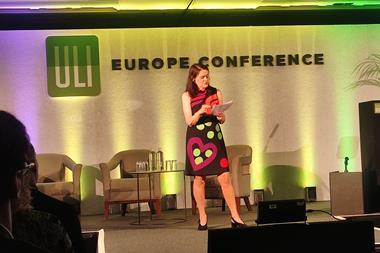Denmark’s ATP is now looking to include direct residential investments in its overall real estate portfolio.
In a bid to broaden the spectrum of opportunities available in an expensive market, ATP, which runs the giant labour market supplementary pension fund, is considering housing.
The fund’s property investment arm ATP Real Estate recently hired residential specialist Lars Gjørret away from labour-market pension fund PensionDanmark to become a its new property investment manager focused on residential.
ATP said Gjørret’s main work will be the execution of a new residential investment strategy.
Michael Nielsen, chief executive of ATP Real Estate, told IPE Real Estate: “The reason for taking hotel and residential into our portfolio is because in general ATP wants to increase its real estate exposure, and we have been looking to see where can we find more opportunities than just focusing on commercial real estate.”
The pension fund was broadening its property investment strategy, he said.
“We have been an investor in commercial real estate for decades and from time to time we are revising our real estate strategy, and last year we decided we should put more focus into hotel and residential because we have seen these two segments as ones where you find rather low risk investments,” Nielsen said.
, ATP announced it had teamed up with AXA insurance companies to buy two London hotels for £180m (€240m) — in the Danish pension fund’s first investment in the UK hospitality sector.
The deal also illustrated ATP’s desire to focus on direct investments and away from funds — which it has already made public.
“We have had residential in our indirect portfolio, but here in Denmark we have not been a direct investor in residential,” Nielsen said.
Last week, ATP about a shift in the way it constructs its overall investment portfolio, dividing elements of assets into four risk factors — equity, interest rate, inflation and “other factors”.
The pension fund has singled out real estate as being an asset class that is exposed to all four of the risk factors ATP now considers.
Asked whether the intention to include residential in the asset mix had sprung from the new risk-factor approach, Nielsen said that, although this was not the initial motivation, the property sector it was now adding suited the aims of ATP’s new investment approach.
“When we decided to do that, it was in order to get access to a broader market, and then we saw the risk profile of residential as very much fitting the desire from ATP because we can generate long stable cashflows that are also indexed.”
ATP is targeting newer, post-1992 residential properties in Denmark, rather than properties dating from before this key year.
Housing built prior to this in Denmark is usually included in legislation controlling rents that can be charged to tenants.
Nielsen said the real estate division is yet to make its first residential investments in Denmark.
“Let’s say we are building up our learning on how to handle this in both on the investment side but also in management phase,” he said.
The residential investment would involve teaming up with property managers both to source deals as well as do the day-to-day management of them, he said.
There was no fixed target for residential investment, he said.
“Of course it makes sense for us to invest in this segment on a rather big scale, but today we find the market quite expensive here in Denmark, and we see a lot of others investors also rushing into residential real estate, so we are very careful,” he said.
It all depended on finding the right deals, he said.
ATP Real Estate has analysed several potential residential deals in its efforts to build up knowledge and experience in the market, he said.
“I’m hopeful that we will get the first residential investment on our books this year, but I really can’t guarantee it because competition is rather tough these days,” Nielsen said.
Nielsen said ATP would continue to chase cashflow from office, retail and logistics assets alongside its new focus on residential and hotels.







